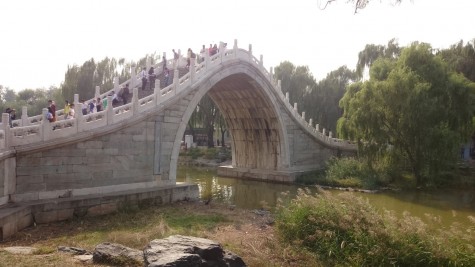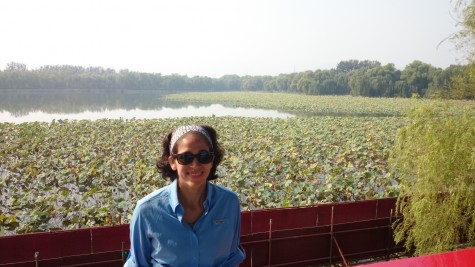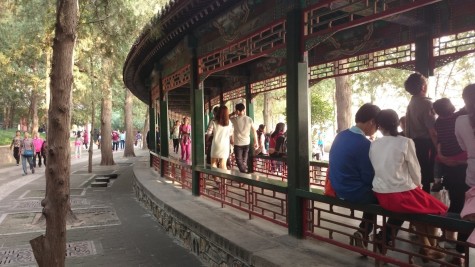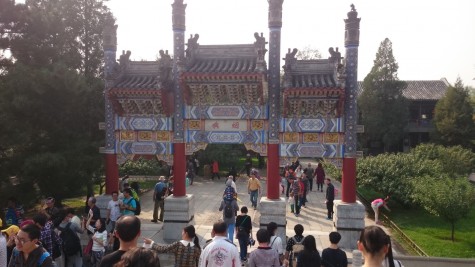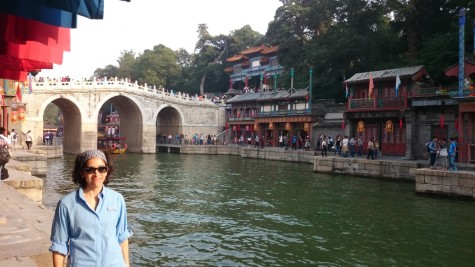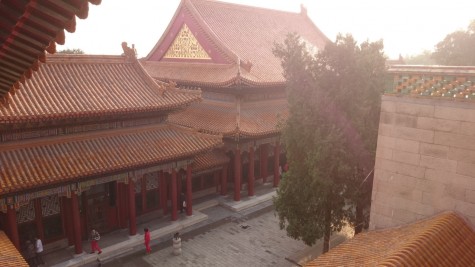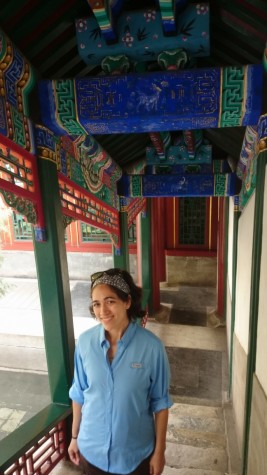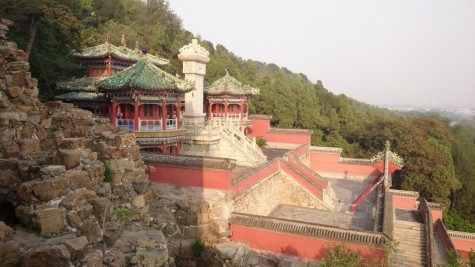Unexpected time in Beijing. Time to visit the Summer Palace. In the 16th century, Chinese emperors built most of what is now known as the Summer Palace. It’s a rather large reservoir surrounded by lovely landscaping, bridges, pavilions, and countless temples perched atop a hill overlooking everything. For the emperors, it was a leafy getaway. It’s now China’s third most popular tourist attraction after the Great Wall and Forbidden City.
Given its popularity and time of year, the Summer Palace was expectedly overflowing. If you’ve forgotten, Chinese National Day was October 1st, and all Chinese receive seven days vacation. Lots of internal tourism ensues, with Beijing being the final for many. Just getting inside the Summer Palace felt a little bit like swimming through people. Not exactly the environment one hopes for when visiting a serene and tranquil garden.
Luckily, the farther we walked away from the entrance, the more the crowd scattered and the more we were able to enjoy the Summer Palace. Rather than go directly to the Hill of Longevity, which is the most crowded spot, we walked in the other direction and around the lake. Later, we thought, the hill would be less crowded and that’s when we would visit.
In the late afternoon, we ventured towards the Hill of Longevity. We first walked up the back of the hill, where we found a massive temple and a canal street created in the model of Suzhou, a scenic city of waterways and teahouses near Shanghai.
Finally, we tackled the front of the hill. A temple at the top dominates the landscapes and gleefully watches people pant their way up several hundred steps to reach it.
The view at the top is just the lake, and I didn’t have the energy the elbow people out of the way to take a picture of it. I did, however, have the energy to elbow people out of the way so we could climb back down the hill. A few subway rides later and we were back at my grandma’s with my uncle and aunt.

 Español
Español
